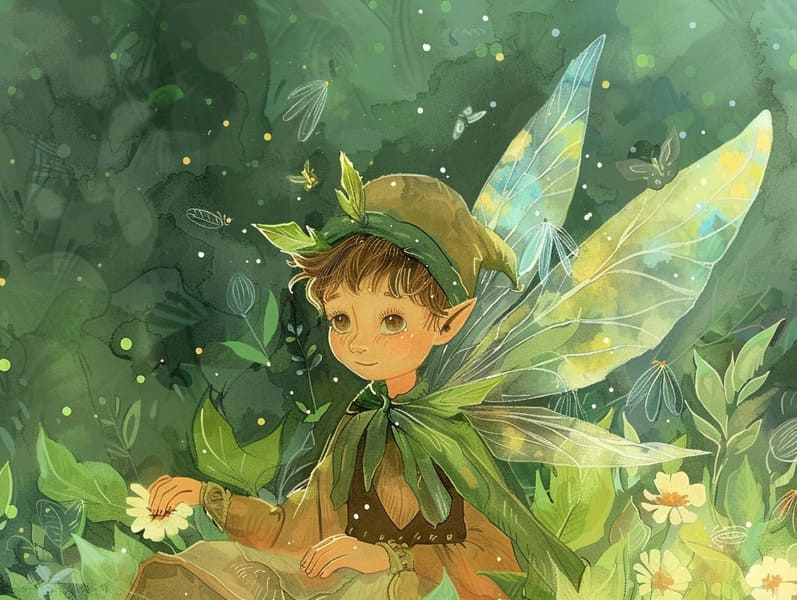
Short fairy tales have enduring presence. These stories have been conveyed from one generation to the next millennia before they were ever inscribed. They were born from a variety of societies, including Eastern traditions. They were initially transmitted among elders, often carrying themes and messages related to the societal norms and beliefs of the time.
The famous Grimm duo, Jacob and Wilhelm (the Grimm brothers), were among the first to collect and release many of these beloved stories. Their compilation, "Grimm's Fables," included tales like "Cinderella," "The Story of Hansel and Gretel," and "The True Story of Snow White," which have since become staples in the world of iconic fairy tales. Similarly, the Danish author's whimsical tales, such as "The Little Mermaid," and "The Story of the Ugly Duckling," have floated into hearts worldwide, cementing their place in the pantheon of famous fairy tales.
Despite being ancient, these tales remain as relevant as ever, especially as children's night stories. These whimsical stories are now available in multiple formats, including vividly illustrated books, magical animations, and digital storybooks.
Their continued relevance can be attributed to several magical reasons:
Ethical Lessons: Ancient fairy tales often impart important moral lessons. Stories like "The Shepherd Boy and the Wolf" teach the virtue of truth, while "The Tortoise and the Hare" show the benefits of steadfastness and humbleness. These tales offer children clear distinctions between correct and incorrect, building their moral compass in a subtle yet profound way.
Sympathy and Perception: Timeless fairy tales frequently feature protagonists facing challenges and struggles, encouraging young listeners to feel with their struggles and rally behind their triumphs. For instance, "The Tale of Beauty and the Beast" teaches us the value of looking deeper to see the true nature of a character, nurturing tenderness and comprehension.
Cultural Insights: Many fairy tales are rooted in the cultural contexts from which they emerged. Exploring these stories can provide fascinating glimpses into different cultures, fostering a sense of cultural respect and perception.
Fantasy and Imagination: The mythical elements in timeless fairy tales—mythical entities—generate children’s creativity. These narratives guide readers to imaginary realms, activating innovative thinking and a sense of curiosity that stays a lifetime.
Ancient fairy tales are not only charming but also informative. They function as bewitching tools in strengthening various intellectual and emotional capacities in young readers. When classic fairy tales are narrated, they advance linguistic abilities by presenting new word meanings and detailed sentence structures. This practice also strengthens hearing perception and mindfulness, as kids focus on every detail, excited to see what happens next.
Furthermore, exploring the themes and characters of traditional fairy tales can sharpen evaluative skills and thinking skills. The young are led to recognize patterns, expect results, and figure out cause and effect. These talks also ease young ones communicate their thoughts and feelings, nurturing their emotional intelligence.
In today’s modern era, the existence of digital storybooks has made these narratives more within reach than ever. Online resources and apps make available comprehensive collections of traditional fairy tales that can be perused or listened to anytime, anywhere. Fairy tales recited are particularly liked, providing an charming way for kids to engage with these fantastical tales. Audio stories and read-aloud videos bring characters and settings to life, often supported by fantastical musical scores and music that improve the story journey.
The timeless charm of traditional fairy tales lies in their ability to alter these guys to changing times while retaining their main lessons. Contemporary reimaginings of these fairy tales often incorporate more varied protagonists and modern settings, making them pertinent to today’s audience. However, the essential messages of braveness, warmth, and rightness remain unchanged, continuing to reach kids of all ages.
Timeless fairy tales also offer a sense of protection and knownness. They confer a structured narrative with a transparent beginning, middle, and end, often closing with the wrap-up of conflicts and the triumph of good over evil. This constancy can be encouraging for children, granting a sense of stability in an constantly changing world.
Traditional fairy tales continue to spellbind and educate new generations, maintaining their magic and pertinence in modern society. As children's night stories, they furnish a perfect blend of fantasy and learning, cultivating moral values, empathy, and creativity. The presence of web-based fairy tales and the in demand status of fairy tales read aloud warrant that these classic narratives remain reachable to new generations.
By sustaining and broadcasting these fairy tales, we continue to revere the rich tapestry of tradition and cultural heritage. Whether you are viewing a richly illustrated book, perusing a internet library, or hearing an spoken story, the allure of bedtime fairy tales is always within reach. These narratives highlight of the continued impact of narratives and its ability to draw us together across centuries and lands.
No matter if you are delving into a gorgeously illustrated book, experiencing a online library, or listening on an read-aloud story, the spell of famous fairy tales is always within reach.
These narratives illustrate of the consistent essence of stories and its ability to gather us across epochs and places, weaving a spell that enchants and educates alike.